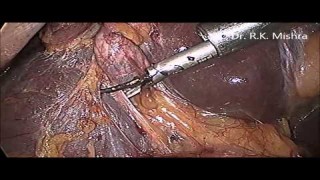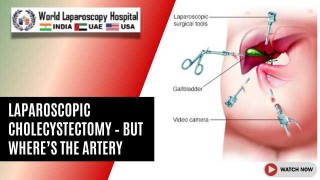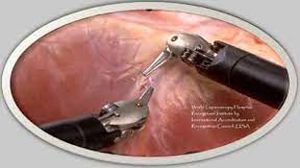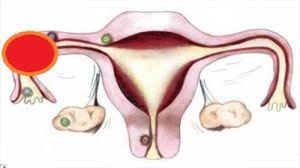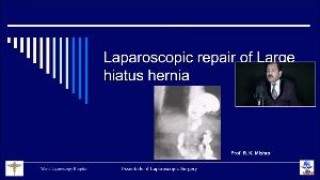TOTAL LAPAROSCOPIC HYSTERECTOMY WITH SACROCOLPOPEXY BY THREE PORT
Add to
Share
2,420 views
Report
2 years ago
Description
This video demonstrates a total laparoscopic hysterectomy with sacrocolpopexy by three ports at World Laparoscopy Hospital. A sacrocolpopexy is a surgical procedure that treats pelvic organ prolapse. Pelvic organ prolapse occurs when the muscles and tissue that support your pelvic organs become weak or damaged and slip out of position. During sacrocolpopexy, your surgeon uses surgical mesh to lift your organs back into place. TLH with sacrocolpopexy is a surgical procedure to treat pelvic organ prolapse. Pelvic organ prolapse is when one or more of pelvic organs slips down into your vagina. It happens when the muscles and tissues that normally support your pelvic organs become weak or damaged. During a sacrocolpopexy, a laparoscopic surgeon lifts the affected organs back into place and secures them with surgical mesh. Restoring your pelvic organs to their normal position helps relieve side effects of prolapse like bulging and pelvic pressure. Most gynecologists perform sacrocolpopexy laparoscopically using small incisions and a camera. Some surgeons perform laparoscopic sacrocolpopexy with the help of a robot. For robotic-assisted sacrocolpopexy, your surgeon follows similar steps, but they pass robotic controllers through small incisions. Surgeon guides these small instruments during the procedure. The surgery takes two to four hours to complete. When it’s over, the patient is taken to a recovery area to wake up from the anesthesia. The patient will stay in the recovery room until the anesthesia wears off. Next, your healthcare team performs a voiding trial. Before surgery, your healthcare provider placed a catheter into your bladder. A catheter is a thin tube that removes pee from your bladder. A voiding trial checks to see if you can empty your bladder without a catheter. During a voiding trial, your provider fills your bladder with saline and removes your catheter. If you can pass (or void) two-thirds of the saline, you’ll be sent home without a catheter and can pee normally. If you’re unable to empty your bladder, you may need to use a catheter at home for a few days. Your provider will give you instructions on how to replace and care for your catheter at home. Your provider will schedule an appointment for you to complete another voiding trial in a few days. The surgeon will close your incisions with either glue or tape. You should keep the incisions clean and dry. Any stitches underneath your skin will dissolve on their own. Be sure to wash your hands often, especially before touching your incisions or changing out bandages on your incisions. Your healthcare provider will advise you on how to care for your incisions. Recovery from surgery usually takes about six to eight weeks for most people. Your provider should give you post-operative instructions that detail things like modifying your activities, taking care of yourself, or taking medications. Your healthcare provider will schedule a follow-up appointment within two weeks of surgery to make sure the procedure was successful and that you’re healing well. Suggestions for recovery Get plenty of rest after the procedure. A responsible adult should stay with you the first one or two nights after surgery. A warm shower, heating pad, and/or walking may help with gas pain. Drink plenty of fluids and eat bland, low-fat foods like crackers and chicken broth. Avoid fatty foods, which can cause nausea. Expand your diet gradually. Walk around your house to exercise your calf muscles and prevent blood clots from developing. Use stairs slowly and use a railing for additional support, especially the first few days after surgery. Things to avoid after surgery Wait 48 hours after the surgery to shower. Don’t swim or soak in water for four to six weeks after surgery. Avoid vacuuming or pushing heavy doors or grocery carts. Avoid lifting, pushing, or pulling for four to six weeks. Don’t lift anything more than five pounds, such as laundry, groceries, children, or pets. Don’t have sexual intercourse or place anything in your vagina. This includes tampons (use pads to absorb bleeding) and douching. Avoid driving or operating heavy machinery if you’re taking prescription pain medication. World Laparoscopy Hospital Cyber City, Gurugram, NCR Delhi INDIA : +919811416838 World Laparoscopy Training Institute Bld.No: 27, DHCC, Dubai UAE : +971525857874 World Laparoscopy Training Institute 8320 Inv Dr, Tallahassee, Florida USA : +1 321 250 7653
Similar Videos

